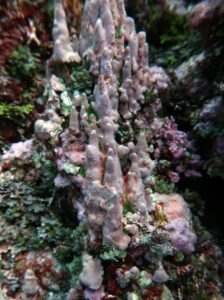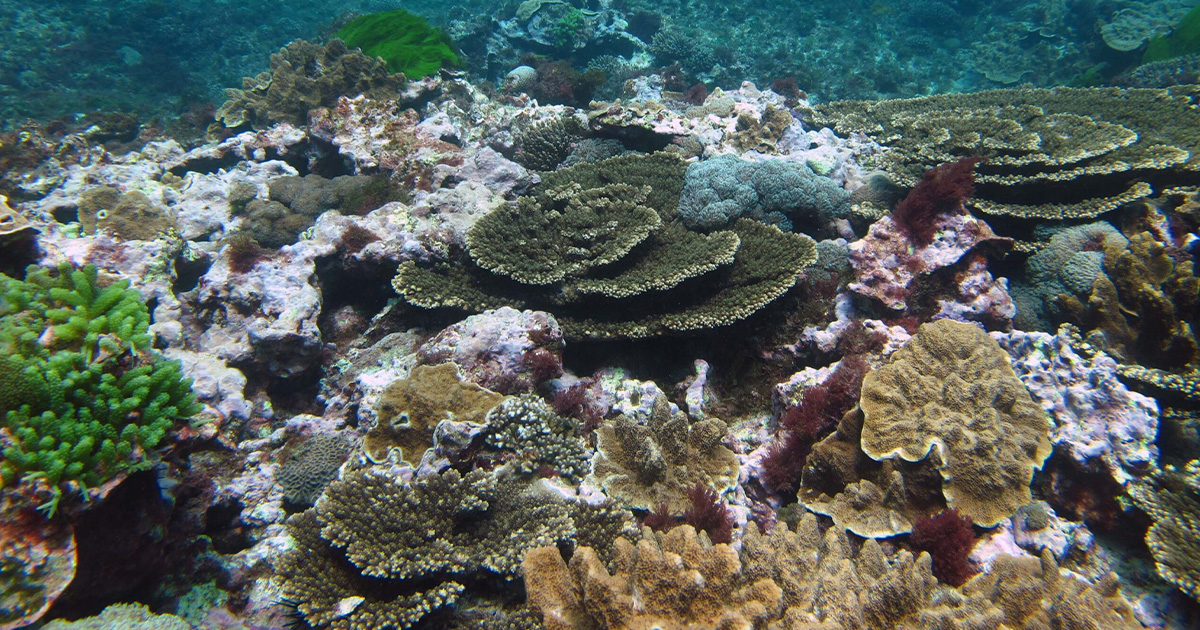A groundbreaking discovery has been made in the heart of the world-renowned Great Barrier Reef and unique reefs systems of the Coral Sea and Lord Howe Island, leading to a greater understanding of how the world heritage-listed landmark is protected.
An international team of marine scientists, led by Griffith University, has identified, and officially named four species of algae new to science, challenging previous taxonomical assumptions within the Porolithon genus. The discovery has far-reaching implications for our understanding of the ecological role of these algae in the coral reef ecosystem.
Research Team leader Associate Professor Guillermo Diaz-Pulido from Griffith's Coastal and Marine Research Centre said Porolithon, a genus of crustose coralline algae, has been long recognized for its crucial ecological significance.
“These algae are responsible for cementing the delicate frameworks of coral reefs, sustaining marine biodiversity in the shallow margins of tropical and subtropical waters.”
Traditionally, branched, fruticose Porolithon specimens found in the Indo-Pacific Ocean were identified as Porolithon gardineri, while the massive, columnar forms were known as P. craspedium.
However, the recent study conducted by scientists from Griffith, James Cook University, the Australian Institute of Marine Science, and the USA and Korea revealed a remarkable discovery: neither P. gardineri nor P. craspedium was present in the eastern Australian waters. Instead, these specimens have been found to belong to four distinct genetic lineages.
 (Image credit: Andrew Hoey, James Cook University)
(Image credit: Andrew Hoey, James Cook University)
The four newly discovered species have been officially named as follows:
- Porolithon lobulatum sp. nov.: With branched forms and lobed free margins, this species is found in the Coral Sea and on the Great Barrier Reef (GBR). The name refers to the plant having lobed free margins.
- Porolithon parvulum sp. nov.: Characterized by short (<2 cm) and unbranched protuberances with attached margins, this species is restricted to the central and southern GBR. The name is explained by the word parvulus of Latin origin meaning small.
- Porolithon pinnaculum sp. nov.: Exhibiting a mountain-like, columnar morphology, with specimens up to 10 cm tall, this species occurs on oceanic Coral Sea reefs. The Latin word pinnaculum means pinnacle, in reference to the presence of branches in the form of pinnacles.
- Porolithon howensis sp. nov.: This species forms columnar protuberances up to 3cm tall and is predominantly found at Lord Howe Island. The species name honors the type locality of Lord Howe Island.
“In addition to their unique DNA sequences, these new species can be distinguished based on a combination of features, including their thallus growth form, margin shape (attached or unattached), and internal anatomy,” said Dr. Soyoung Jeong, first author of the study.
"This important discovery challenges our understanding of the algae within the Porolithon genus, emphasizing the need for further exploration and conservation of the Great Barrier Reef and its unique inhabitants,” Associate Professor Diaz-Pulido said.
The discovery of these new species not only adds to the rich biodiversity of the Great Barrier Reef and other remote coral reef areas, but also highlights the importance of continuous research and conservation efforts.
Porolithon species are very sensitive to the impacts of ocean acidification and warming, and it is urgent that we recognize and document this diversity given the potential risks of losing this diversity to climate change.
“We can’t protect what we don’t know,” Associate Professor Diaz-Pulido said.
“These findings are crucial for preserving and protecting the delicate balance of this unique and fragile ecosystem.”
The study was funded by the Australian Biological Resources Study (ABRS), with support from the Reef Restoration and Adaptation Program (RRAP), the Australian Institute of Marine Science (AIMS) and Parks Australia. The study was also supported by the Great Barrier Reef Foundation and the specimens have been deposited in the Queensland Herbarium.
The study ‘New branched Porolithon species (Corallinales, Rhodophyta) from the Great Barrier Reef, Coral Sea, and Lord Howe Island’ has been published in the Journal of Phycology.



